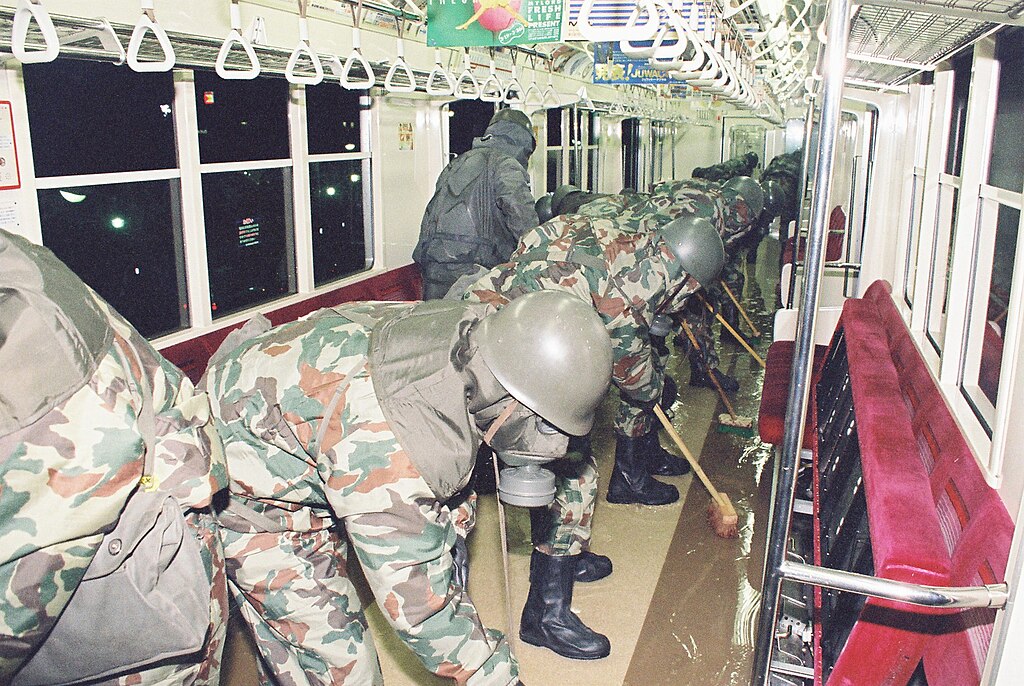Modern history recorded one of the most destructive terrorist actions when Aum Shinrikyo’s members launched their assault in Tokyo, Japan, on March 20, 1995. During the rush hour commute, Aum Shinrikyo cult members discharged lethal nerve gas sarin from five subway trains. Popular transportation routes in Tokyo experienced a suicide attack that killed thirteen people but injured more than six thousand before taking the city into a chaotic state of terror.
Aum Shinrikyo, a cult led by Shoko Asahara, carried out the operation with great attention to detail. The cult members transported liquid sarin in plastic bags covered by newspaper, which they carried onto trains. The members of Aum Shinrikyo used sharpened umbrella tips to break into their plastic bag containers at selected subway stations, distributing toxic gas into busy train compartments. The banned chemical weapon sarin rapidly triggers deadly breathing complications as well as paralysis in exposed individuals. Attackers carefully chose subway routes that met at Kasumigaseki Station, close to governmental facilities, since this showed their plan to strike the Japanese political and official structures. Emergency responders faced overwhelming situations when the attack occurred because hospitals struggled to provide care to thousands of victims who exhibited symptoms of blurred vision alongside nausea and difficulty breathing.
The Aum Shinrikyo incorporated teachings about Buddhism, Hinduism, and end times predictions when it emerged in the 1980s. From his position as cult leader, Shoko Asahara predicted that doomsday approached, which would leave his adherents as the sole survivors. A significant amount of financial support combined with scientific knowledge as a result enabled the group to develop their chemical weapons system, including the creation of sarin gas. Aum Shinrikyo executed their first violent assault before the subway attacks in Tokyo. The cult conducted its first chemical assault with sarin in Matsumoto, Japan, which led to the deaths of eight people alongside numerous hospitalizations of hundreds of individuals in 1994. The 1995 attack became the most destructive operation in their terror campaign since its inception.
Japan and the entire world were stunned by the Tokyo sarin attack, which revealed multiple weaknesses in public security alongside emergency response systems. The Japanese government conducted a significant nationwide arrest campaign followed by hundreds of people, including Aum Shinrikyo leader Shoko Asahara, who received execution in 2018. Memorials, along with yearly ceremonies, support victims of the attack while honoring survivors who continue to battle lasting health problems, which act as warnings for future threats.

